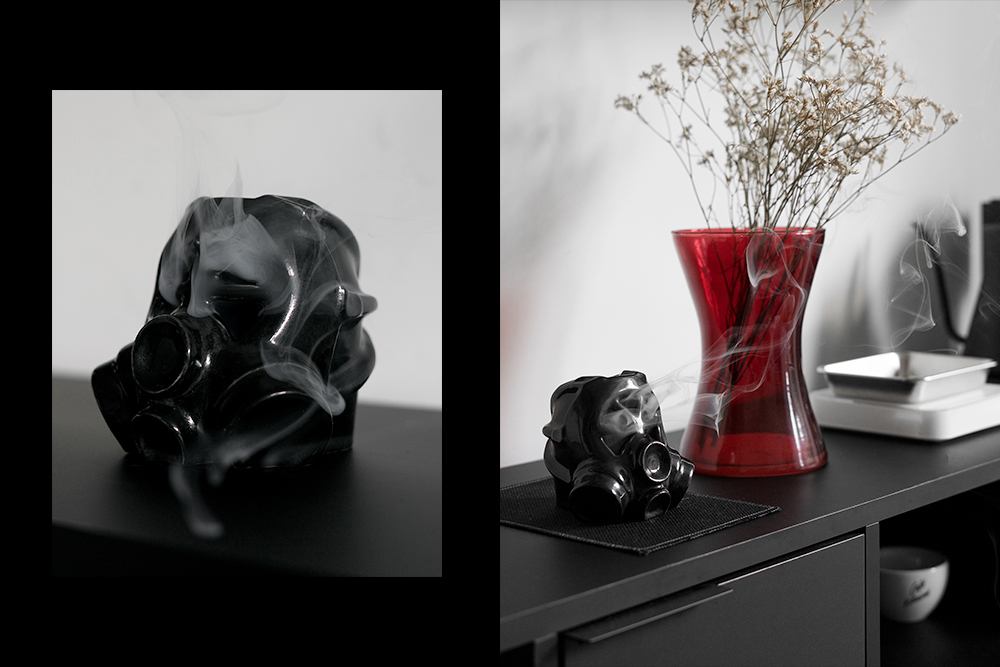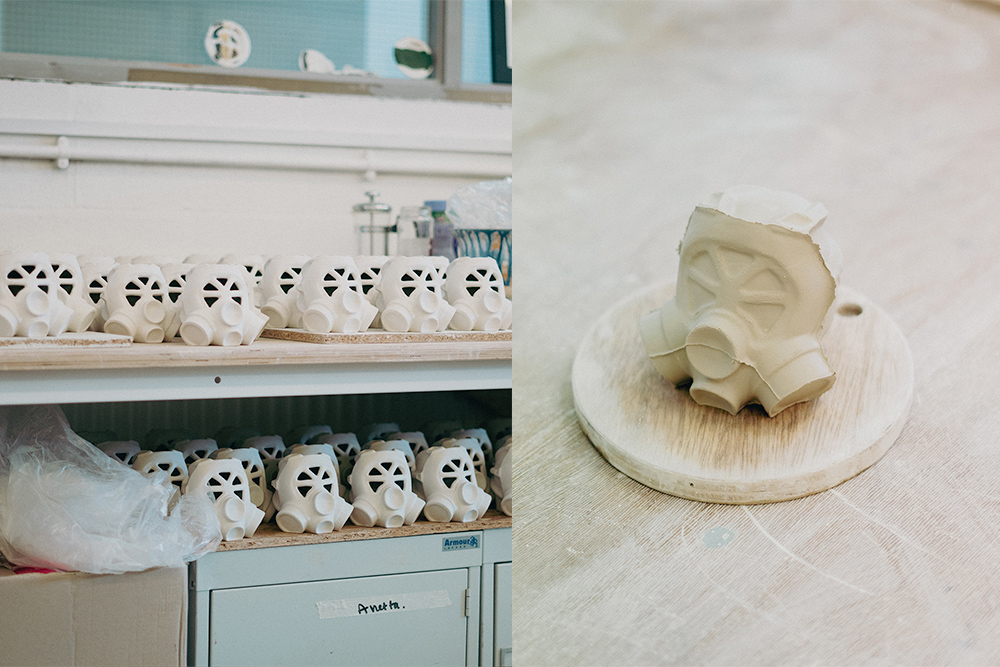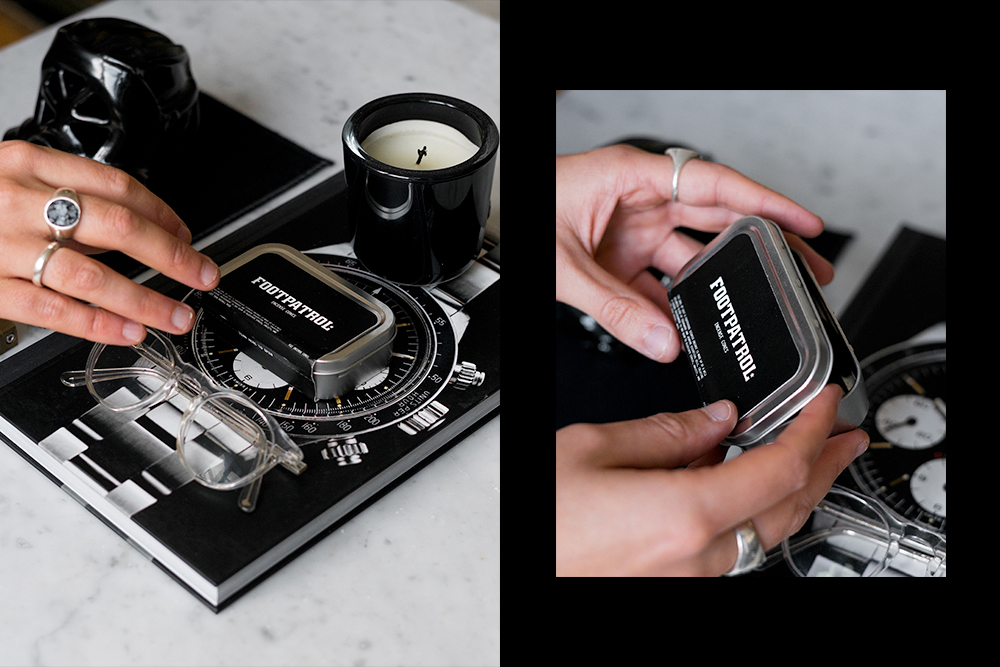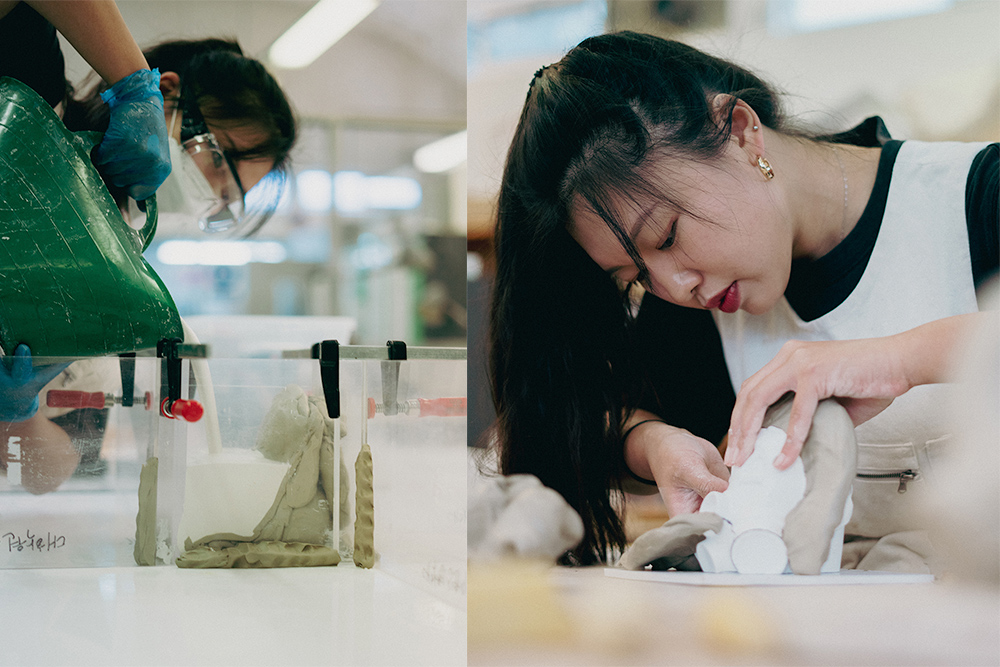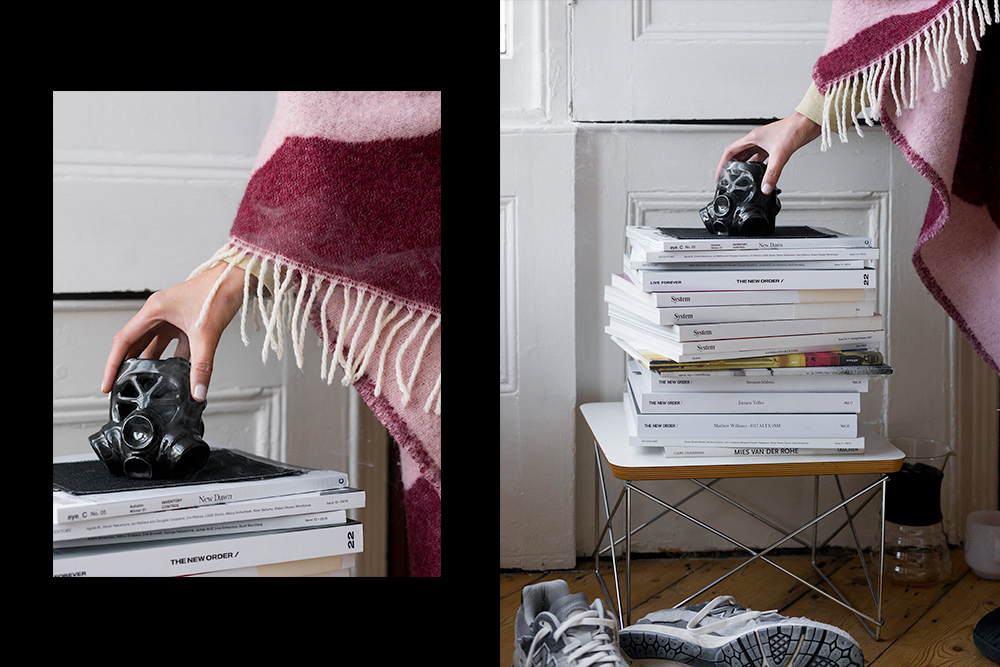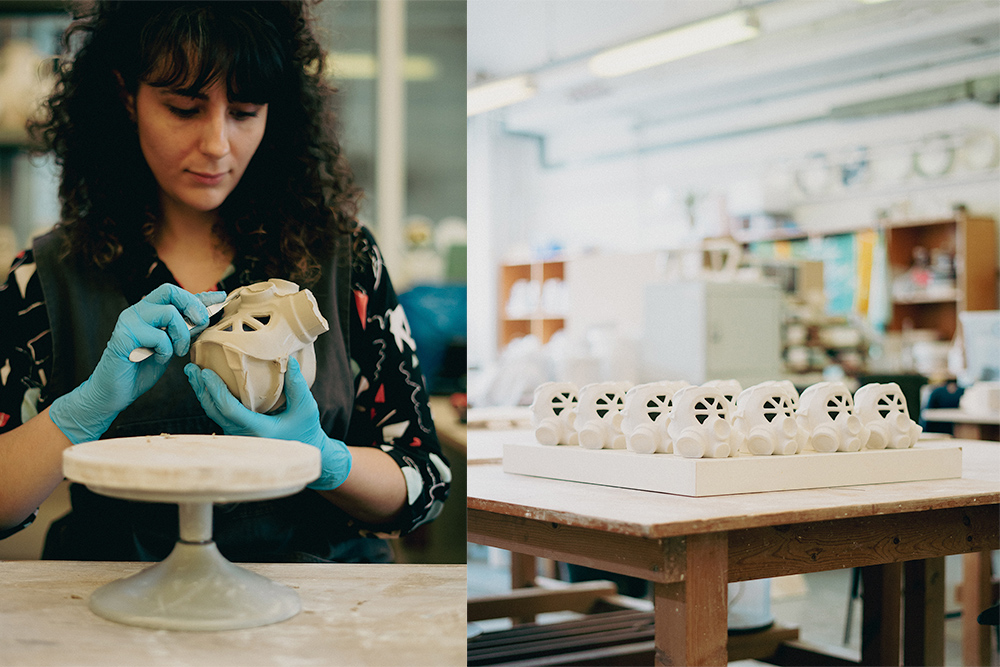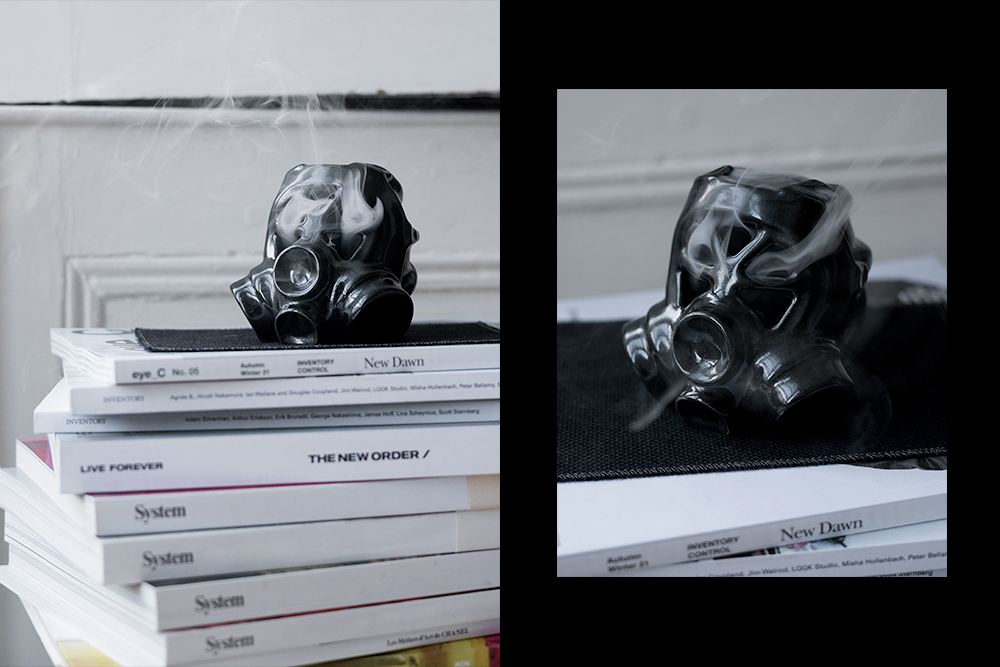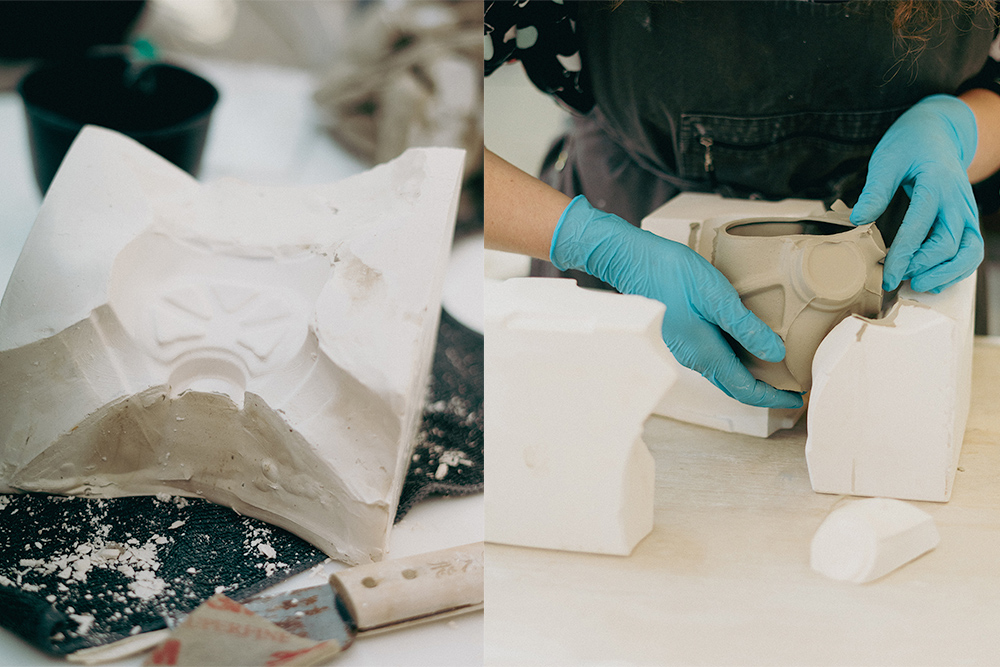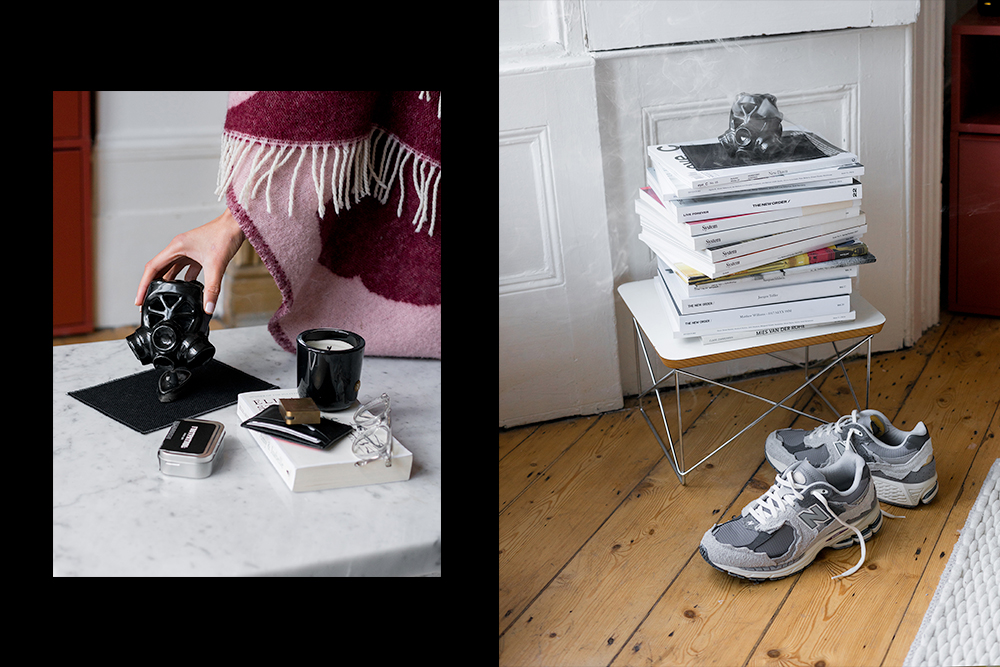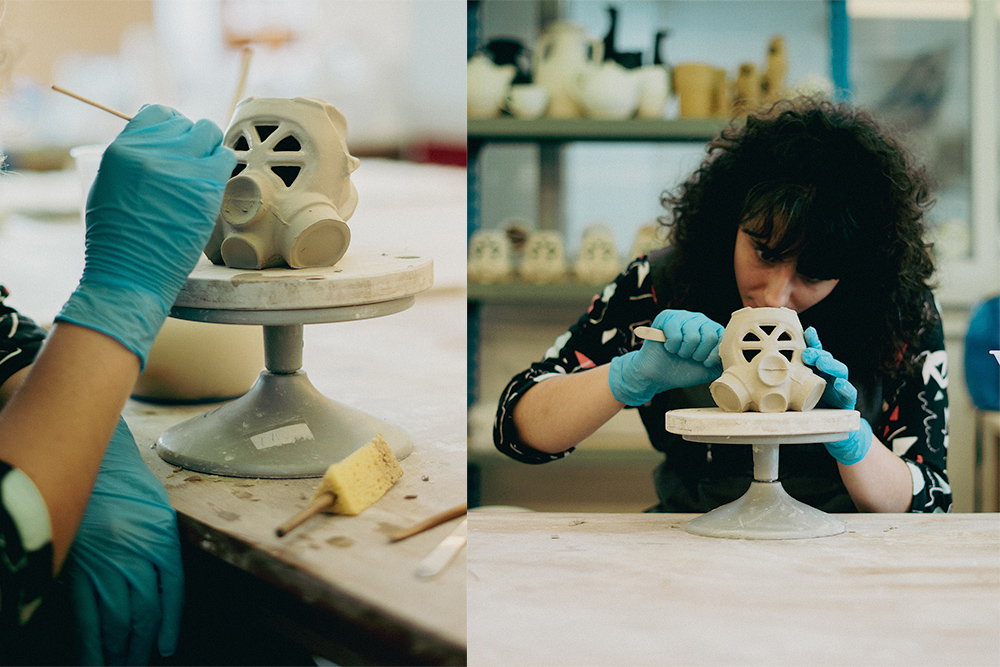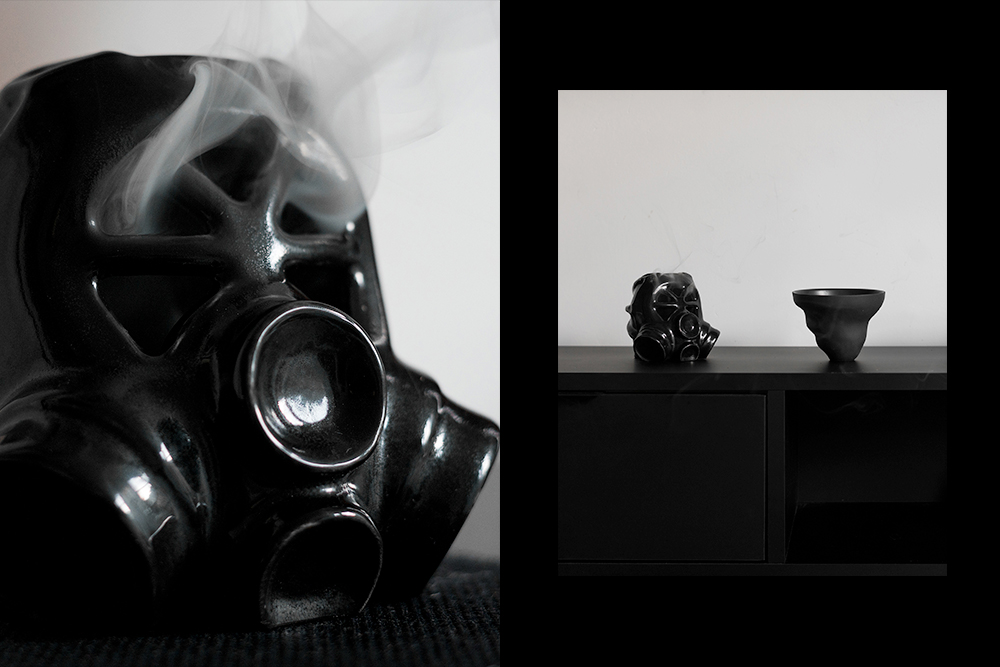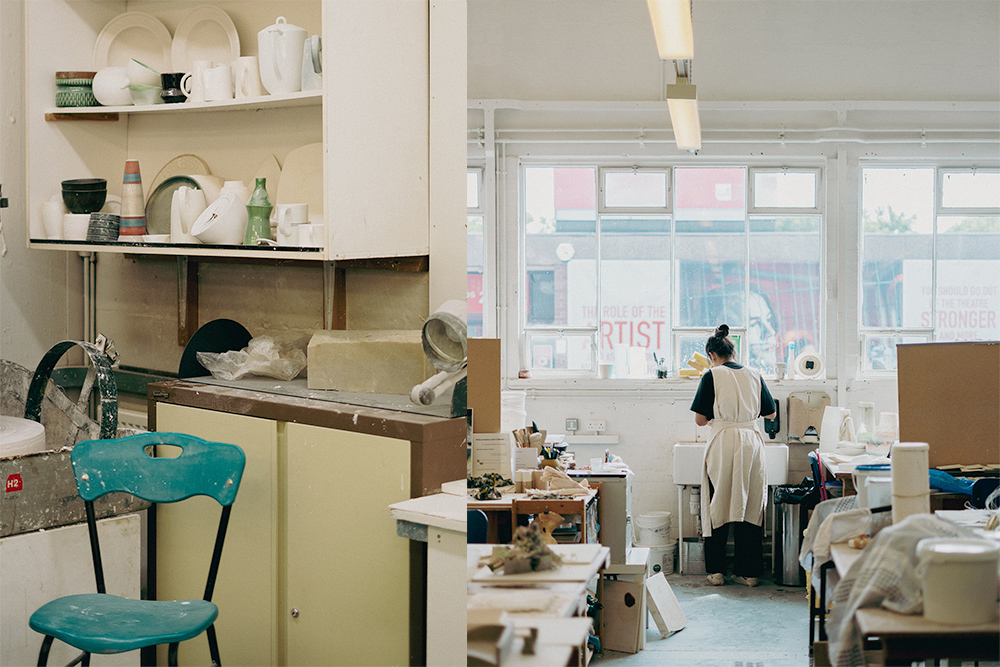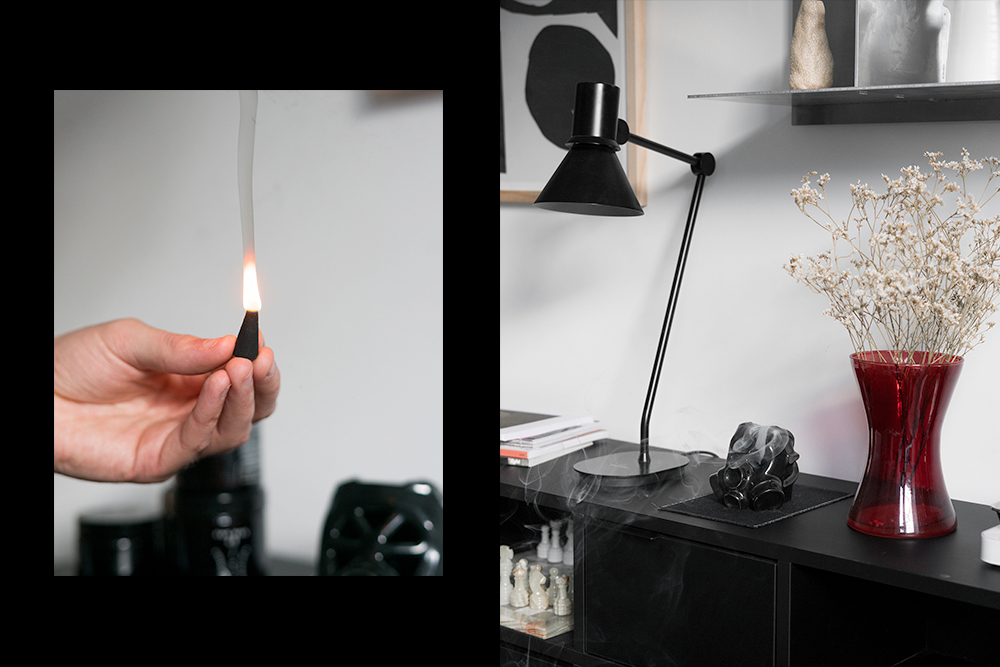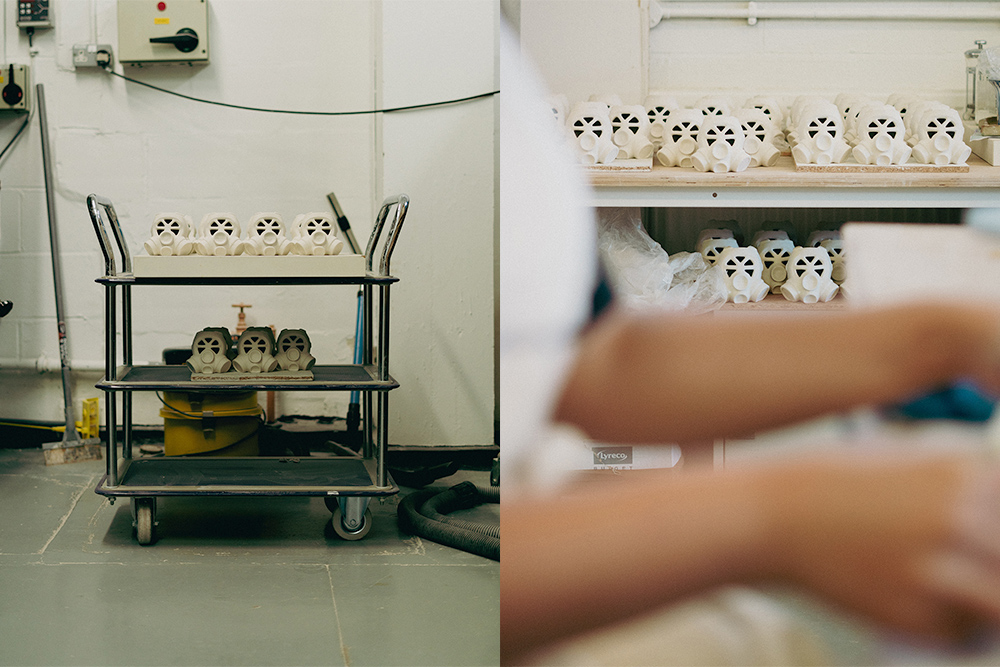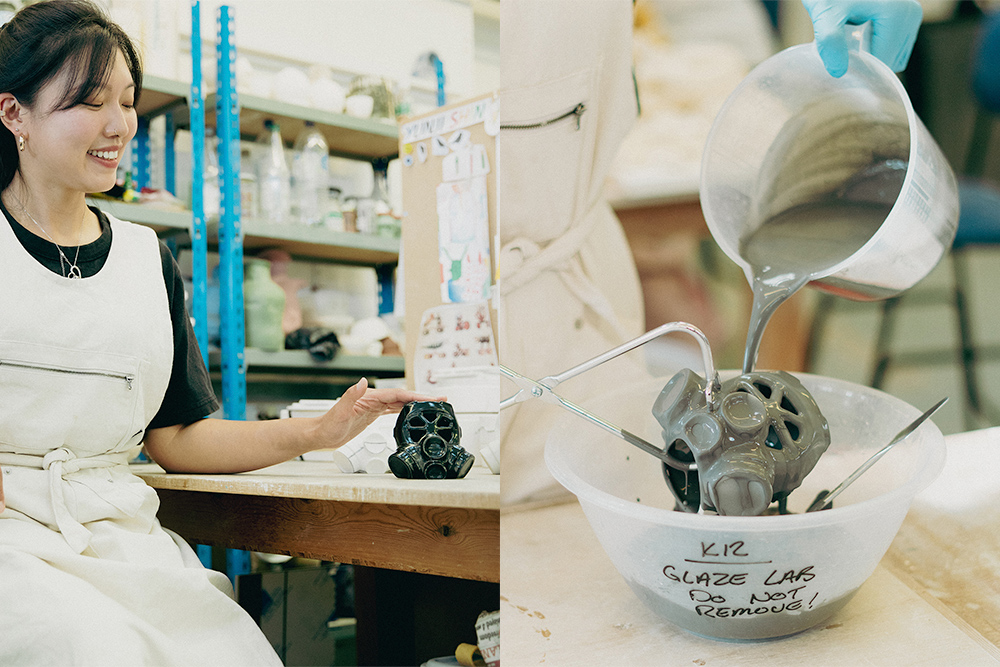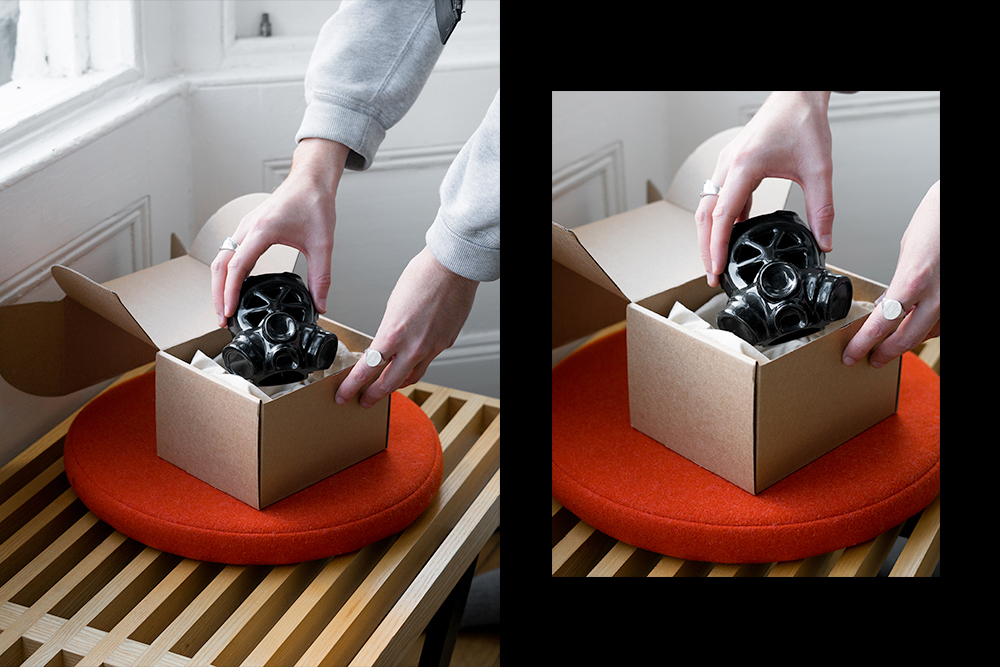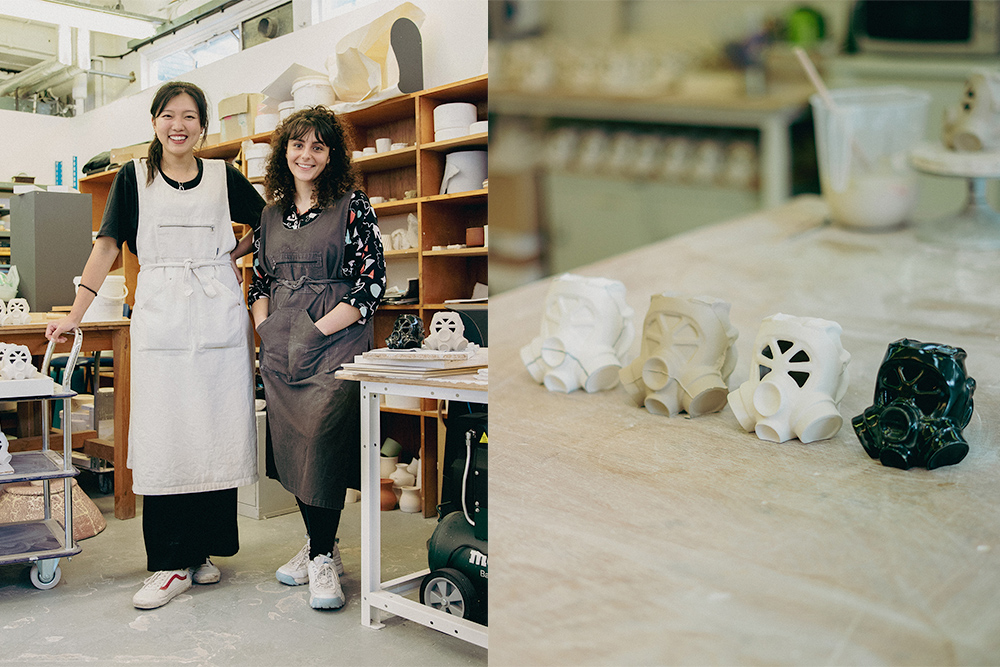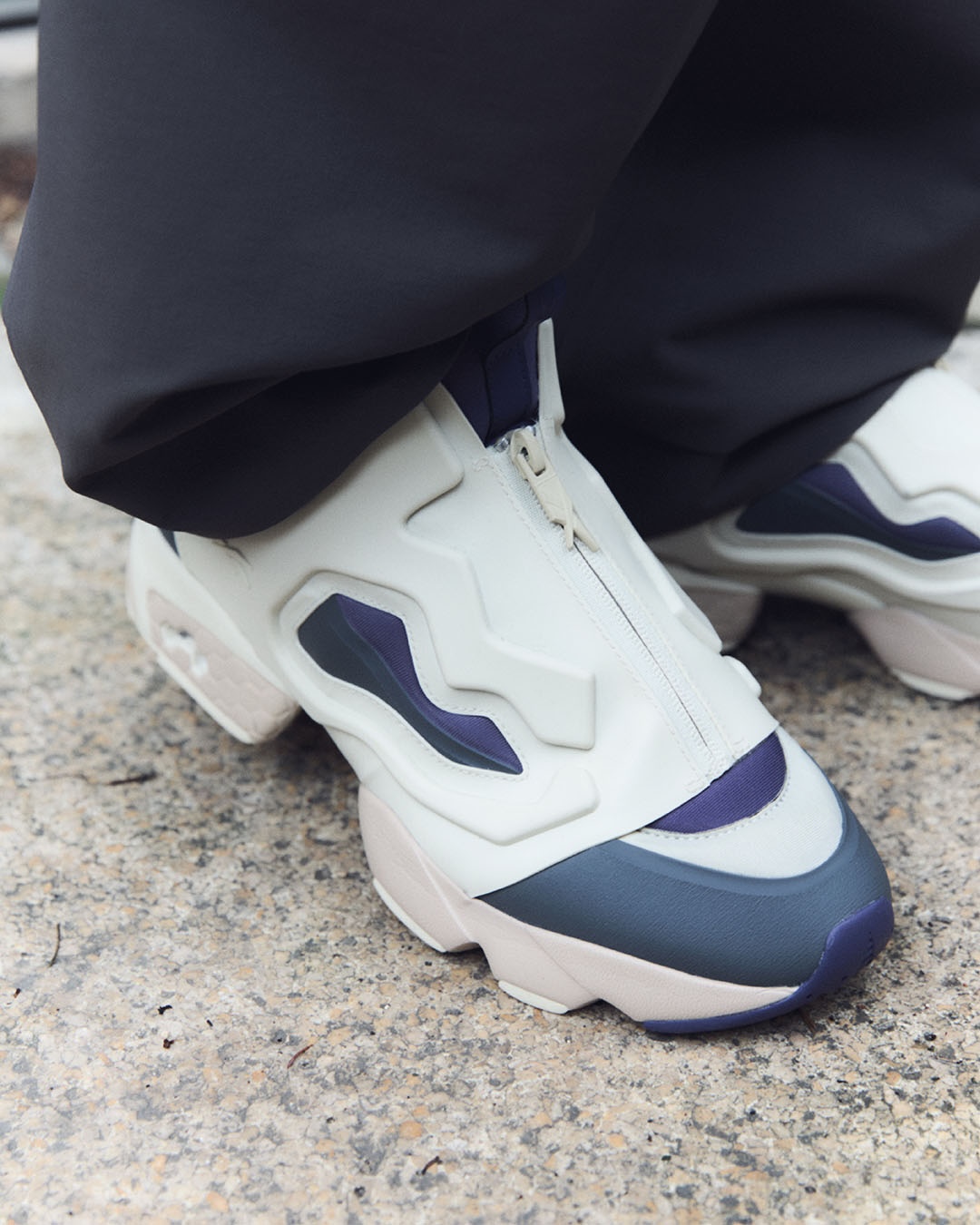Tag: Ceramic
Design comes in many different forms. Whether it’s within footwear design, architecture, painting, essentially everything started off as a concept and slowly grew into a reality.
The Air Force 1 ‘Sculpt’ is without a doubt one of those creations. For this release though we wanted to approach it in a slightly different way, looking into an industry we felt was one of the lesser spoken about/lesser known skill sets behind design and sculpting.
We took a trip over to West Hampstead to meet father and daughter duo Chirs Bramble and Freya Bramble-Carter and asked them to give us a little bit of insight into the world of ceramics and pottery and some of the history behind the industry alongside what they do as experienced and well respected creatives within their field.
Read the full interview and feature below and shop the Nike Air Force 1 ‘Sculpt’ here!

Footpatrol: I always start every interview with whoever we interview with a simple question of how are you ?
Chris: Feeling good
Freya: Yeah feeling good, revamping everything, everything is fresh at the moment, I am re-doing my home. I feel like it is quite a fresh time for me which is nice, I just came back from a trip.
FP: For those people that haven’t had the opportunity to meet you guys or have seen your work, could you give us a bit of an introduction on what you do and who you are?
Chris: My name is Chris Bramble, I am a tutor and a ceramic pottery and sculptor. I work in London, North West, I make products and I teach.
Freya: I call myself an artist, I teach pottery, I share the studio with my father and I like to make work in my own space as well and we sell and exhibit together and separately. We do lots of work playing around with the community and internationality, that’s the practice.
FP: Where did it all begin for you both?
Chris: Well for me it began at college. I was doing an exhibition design course and I was allowed to use all the materials. I fell in love with clay and dropped everything else overnight and did clay until I could get a portfolio together and luckily enough, through an invite I was able to go to the Glasgow School of Art to do my BA Honours degree. I enjoyed it so much I stayed there for 10 years. I took 2 years out and went to Zimbabwe and I taught in Zimbabwe and was an exhibition officer in the national gallery for 2 years.
Freya: I studied fine art and there was a ceramics studio there, I was in the studio working with clay a lot and I thought, I am doing all these different art forms but clay was the one thing I kept going back to. I was fluent in it and that’s because I’ve had past experiences growing up in my dad’s studio, helping teach and stuff like that as a child. After university, I felt it was a natural calling, it’s always what I’ve wanted to do to be honest. I kind of had a moment when I fell out of love with the art industry and when I started to be creative again it was the only thing I wanted to put my hands to. I asked my dad, can I help you out in the studio for a little bit if you give me some pocket money. I started teaching kids classes. Then the ball just started rolling to just teaching everyday. I learnt the practice inside out really.

Chris: I totally agree. She got her degree at Chelsea!
FP: Did you ever think you would follow in your dad’s footsteps in this kind of line of work?
Freya: No , I didn’t think I would follow, I didn’t plan it all. I think probably as a kid I thought it wasn’t really a thing for me. Naturally we both knew my twin sister didn’t want to follow what our parents did. That is only because it is natural you see how difficult it is at home. Maybe for one reason they were really looking after us as kids, we felt their stress. In our minds we were thinking whatever they are doing we’re not going to do. People even ask me oh you ‘re going to do pottery, no, no, no. But you know what, I wouldn’t do anything else, it’s the best decision I’ve ever made. I think the best advice you gave was to follow what I enjoy and since I’ve made that decision more so now, everything else just went out of the window really.
FP: Chris, from your perspective, what is it like seeing your daughter following in your footsteps?
Chris: It is a lovely recognition to be working with your daughter. I’ve worked with loads of different people over the years and I found working with my daughter is the safest, you got somebody watching your back. Your kids are away from you for a longer time whether it is at school or university, they disappear. It is nice that her and her twin sister have come back and that we have worked together and we are able to push the business much further than I could have done myself.
FP: Sounds like wholesome content if you ask me. I’ve told you guys briefly, I have discovered you guys through the vogue article, and honestly when I saw some of the pieces of work surrounded by both of you, that was when I was like yep. Coincidentally, Nike asked us to do a project the same week on the shoot , being on the Sculpt Air Force 1’s, so that is the direction we wanted to go in. Could you tell us a bit about your own respective styles and would you say they differ completely or is there a lot of similarities between the two?
Chris: The similarity between the two of us is that we can both throw large wear , which isn’t a problem for us. When Freya does her large wear she uses it as a canvas , I think she falls back on her painting a bit with the use of colours when she went to Chelsea School of Arts. I was lucky I had two different tutors at the beginning, a sculptor and a thrower. I was able to put human elements in my work. That’s why you see heads on top of pots or hands coming out of handles as it is quite figurative. Human elements, I like human elements because I feel like everyone can really communicate with that.
FP: And yourself Freya?
Freya: I suppose I like human elements as well, I kind of incorporate them into the forms of lots of vessels. I think I have spent more than a couple of years doing vases and kind of sculptural domestic wear. Slightly leaning more into interior design, whereas he does what he does really well, it’s kind of got a bit floral and femiminine, my market really appreciated it. I really enjoy making that work, I am really into technical glazing and all of that is really exciting to me. In the future I have got plans to do other styles of work, to move on and expand in other directions and I also work with my sister who also does theatre. We are kind of expanding and exploring with different kinds of mediums , we got projects like community projects that we might be working on next year, and a lot of exciting things that involve the community.

FP: Where do you guys see your brand and studio going ? Did you plan to expand, any ideas to take over the world or did you want to keep local, small and family-focused?
Freya: I think we can do both.
Chris: The most important thing is that we can carry on enjoying it and be able to make it grow honestly. Without it turning into a mass production thing, we believe that we put a bit of our spirit in our work, it’s a bit of us and when you go too wide, then sometimes you see the colleagues lose a bit when they get too satisfied . We hope to keep that together but carry on growing like we have been doing in the last few years.
Freya: I think that it is special to have the close knit community and have the family vibe and most importantly above everything it is about care. People value the care that we give and they give in exchange. It is really important , I think, for this type of work for people who really put their life and soul into what they make, we treat them with utmost respect and help them. I feel like we would be contradicting ourselves and our integrity as people and artists if we work in mass production, it goes against the whole point really , but we do want to expand in a way where we just want to have more people that can help us do that really. Personally, I would love to go more internationally as well. I think I am in a time in my life now that I am ready to travel. It would be nice to open studios abroad or work with other artists, just be open in that sort of way. There are definitely ideas in that way.
FP: This question is mainly down to my naivety of the industry. When you guys were getting into pottery, besides having each other’s backs, were there any other influences or artists that you had, that helped as a catalyst wanting to work in this industry?
Chris & Freya: No
Freya: My only inspiration was the work that I saw in my home and living lounge was his work. To be honest, no other ceramics inspired me in the same way, as there are loads of people that work with clay, but not really. When I started studying it , I was pulling out different types of sculptors like Alan Peascod. I like expressive people like that .
Chris: All I can say is that my original teacher told me to drop my exhibition in, Anthony Bennett was really important because I could see what could be done with clay. When I went up to the V&A, I was told Anthony Benett originally did the ‘d’andfour man’ and he was able to every line in his lip , every crease at the side of the eye, every hair on his face and he did it all in clay. He was my true inspiration. Through him I was able to understand and express my feelings through clay and be able to manipulate it into any form or shape, whether it was a toilet or whether it was bricks for a house or cups, sourcers etc. Through him I understood that it was a matter of doing it. Just do it and that’s it.

FP: I love the example, the first one the toilet, a class little anecdote!
Freya: I had to make a toilet once it was awful.
FP: May I ask why you had to make a toilet?
Freya: I forgot to make the rim and the toilet water splashed out of the bowl onto the person.
Chris: Have you ever seen pottery throwdown? Have you ever heard of it ?
FP : No
Pottery Throwdown is a series on television once a year, where they get 10 amateur potters, it is like British Bake off, it is run by the same company, sold by the same company the Love Productions. So Freya was on that and the day she got thrown out, is that day she forgot to put the rim on the toilet, so when they pulled the chain it all came out and trenched the judge. They loved it, they kept it there because it was fun. This programme was built for people to show what they can do and it’s entertaining.
FP: I wanted to go into a little bit of detail just to talk about the different types of clay, purely because I feel for a lot of people it is a new bit of insight to the industry. Could you give us a brief example of the different types of clay and the different effect it can have on the final result.
Chris: Well, London is built on clay so when you get a hot summer and the ground dries up, you get a lot of subsidence in London. London is built on red earthwear , that’s why it is full of pottery and we have large smoke stacks in London. If you use that clay in the ground, dig up the ground anywhere in London you’ll get a sticky yellowy brown stuff and that’s called red earthwear. That red earthwear is used to make cider jars, slits in roofs, bricks and gardening pots. Now, the red earthwear gardening pots, everyone should recognise them because they are kind of red/ browny , they are very porous so they half fire them, so it drains water out of them. London is rich with it. Porcelain is completely up the high end , the red earth would be fired to 1000 to 1040 whereas porcelain will be fired right up to 1,400 degree. Porcelain is translucent, some porcelain is see-through, at 1,400 degrees the porcelain clay turns into glass, but that originally comes from China. A natural happening thing in China, however, earlier on in the century, we found out that we can replicate it rather than buy it as imports from China. You can find most of them clays down in Cornwall and to give it’s translucent ability, bone has to be added and the bone burns out and makes it whiter and adds calcium. It is called bone china because it has got bone in it, people don’t release it has bone in it.
Now the other kind of main clay is stoneware and that came about in the mid 50 and 60s where their studio pottery had a revolution. It started with a guy named Hamada from Japan and a guy called Bernard Leach , they are the Godfathers of studio pottery. Studio pottery means that you have a small company making things by hand, which was opposed to the Industrial Revolution in 1910, where we had machines mass making things that was the beginning. Large cotton weaving up North and industrially made ceramics in Stoke-on-Trent. Stoke-on-Trent had five pottery towns together that actually produced together to create pottery for the whole country. Now those companies are slowly dying. I will list a couple of reasons for that because we have companies like Habitat and IKEA to mass produce things and people like cleaner cut things these days. So they like mould made things rather than hand painted and handmade. The other thing which is quite unusual, up to the 70’s everybody got married. Once you got married, you always got at least a 150 piece tea set for your wedding present. Some people have two or three, if you ask somebody mature they will say I’ve still got one of those tea sets upstairs. People also used to have large racks on the walls for these things. Another reason is that Americans used to come over and buy whole sets of Derby wear, Dembi, Worcester and all these other sets.
Freya: The clay we use is stoneware in the studio and we have a light grey to dark grey black stoneware. A lot of Chris’s work is like grogged play, which means that it is really gritty, so a lot of the sculptural stuff will have a stronger grogged play and you will see a grainier texture on the surface compared to smoother and coarser plays.
Chris: The revolution of the industrial and handmade things and it’s happening now again, the kickback against people sitting in front of computers all the time instead of feeding information into computers, people are getting bits of clay now and expressing themselves.
Freya: Yeah, now it is like people like really wonky stuff, not clean stuff as it is more raw.
People are expressing themselves when they are at dinner parties,it doesn’t matter if you are man or woman, the artist is out there giving out their dinner and it is a conversation, like ‘oh did you make that.’ Did you make that platter? Who made these mugs? Ah, I made them. It is another string to people’s bow and its way of expressing yourself and it is accessible from the age of 2 to the age of 105. Which is so great about clay, when you come along and do your little event thing, you’ll see.
FP: I am excited for it if I am completely honest with you! Just before I let you free, we like to leave everybody with an opportunity. If there is anything you would like to share, whether that be a message of positivity, something you want to get people excited for, how would you like to sign everything off?
Chris: Just get your fingers in and have a go!
Freya: I would like to say come see us and have fun and before that relax and follow your joy.





Over the years at Footpatrol. We have worked on a range of accessories, from keyrings, door keys, jewellery and even homeware pieces. Our interests outside of Footpatrol span far and wide which is what brings such diversity in our projects and collaborations.
To further broaden our horizons. Footpatrol have teamed up with 3D printing specialists, Batch.Works and fragrance experts, Earl of East to bring to you a Gasmask inspired Incense chamber and special Footpatrol incense to pair alongside it.
Earl of East was founded in 2014 as a shared passion project between Niko Dafkos and Paul Firmin. Since launch it has grown into a business built around a love for fragrance. What started as 3 candles soon developed into a whole range of lifestyle and beauty products.
To best showcase the work Earl of East produce, we partnered up to produce Footpatrol scented incense composed of a balanced blend of cedarwood & jasmine essential oils. The aim was not only to create a scent that helped alleviate stress, anxiety and heighten your mood turning your home into that happy place we all like to keep tucked away in our minds.
Based in East London, Batch.Works have been pushing the realm of 3D printing by turning it into forms that fit perfectly within households. Using the latest technology Batch.Works have focused their attention on being able to produce in an eco-friendly way ensuring the materials they use are recycled and responsibly sourced either from sugarcane starch or recycled packaging.
From turning our prestigious Gasmask logo into a 3D printed item, the team at Batch.Works worked closely with Nicole and Yunji, a duo of emerging ceramicist talent who worked meticulously by hand to create a limited run of ceramic Black incense chambers using the 3D printed model as the original mould.
Simply place a lit incense cone on the base within the chamber and watch as the smoke drifts out of the openings within the Gasmask chamber.
Limited to 100 pieces, the Footpatrol Gasmask Incense Chamber and Incense Cones (sold separately) will be launching in-store and online on Saturday 4th December (Available online from 08:00AM GMT), priced between £20 – £100.
